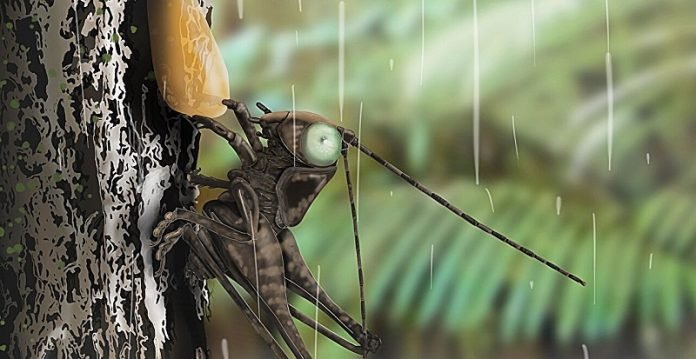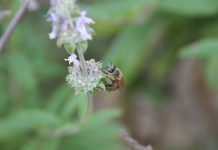
A tiny insect trapped in amber for 44 million years is helping scientists uncover the ancient sound wars between predators and prey.
In a groundbreaking study, researchers have analyzed an extinct katydid, revealing how these ancient insects used ultrasonic communication to avoid being detected by predators.
The Katydid’s Ultrasonic Calls
The research, led by Roberto Lei and team, focused on a well-preserved katydid named Eomortoniellus handlirschi.
By examining its remains encased in amber, scientists have reconstructed the creature’s mating call, discovering it communicated in frequencies far beyond human hearing.
The katydid’s call was high-pitched, likely above the hearing range of most mammals of that time, except for a few like the first bats.
This suggests the katydid was part of an evolutionary arms race, adapting to avoid being heard by its predators.
The Evolutionary Sound Battle
Dr. Charlie Woodrow, the lead author of the study, explains that this discovery is significant because it shows how katydids adapted their communication to evade early bats, which had developed the ability to echolocate.
This arms race between echolocating predators and their prey is a key part of understanding how these creatures evolved.
As bats began to use echolocation to hunt, katydids like Eomortoniellus handlirschi responded by producing calls at even higher pitches, entering a phase of sound-based evasion and detection.
Unveiling the Past Through Modern Technology
The study, which is co-authored by Professor Fernando Montealegre-Zapata, highlights the rarity of finding such a well-preserved fossil.
The discovery was made possible thanks to the advancements in scanning technology, allowing researchers to examine the internal structure of the katydid’s ear, which is located in its legs.
The Significance of the Katydid’s Ear
The CT scans revealed that the sap which trapped the katydid also preserved its delicate ear structure. The team discovered that the katydid was probably best at hearing sounds around 30kHz, similar to the frequency of its own call, suggesting it used these sounds for communication.
Interestingly, the katydid’s ear also showed peaks at around 60 and 90kHz. These frequencies likely helped the insect detect the echolocation calls of early bats, thus avoiding becoming prey.
The Evolution of Insect Ears
Over time, the ears of katydids have evolved to listen to even higher frequencies. The study of Eomortoniellus handlirschi provides a unique insight into this evolutionary process, showing an early stage of development in these insects’ hearing abilities.
The katydid fossil has been part of the Natural History Museum’s collection for over 80 years.
Its recent analysis demonstrates the value of museum collections in uncovering the secrets of the past. Dr. Woodrow emphasizes the potential for more discoveries, as similar fossils might be held in private and public collections, awaiting identification and study.
Key Takeaways
This research, published in the journal Current Biology, not only enhances our understanding of ancient ecosystems but also sheds light on the intricate evolutionary battles that took place millions of years ago.
It highlights the sophisticated ways in which ancient creatures communicated and adapted to survive in a world filled with predators.
Source: Natural History Museum.



